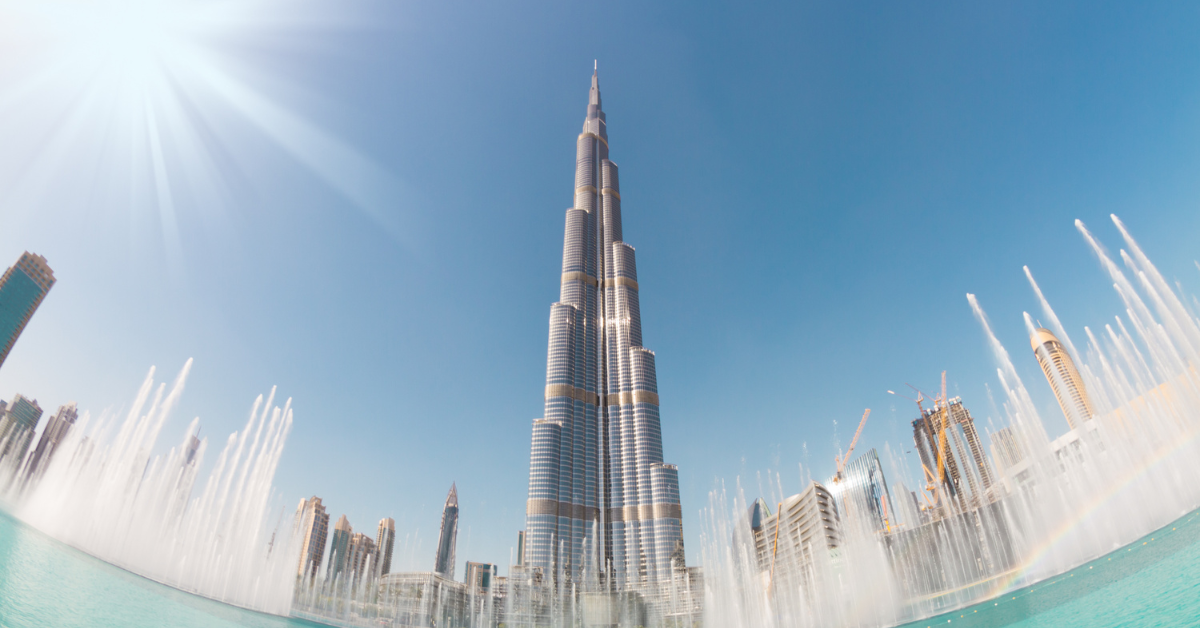Dubai is one of the most glamorous cities in the Middle East, known for its skyscrapers, resorts, and luxury lifestyle. However, in Japanese, there is no established kanji notation for “Dubai”, and the city is typically written in katakana. This linguistic choice reflects how Japanese people perceive Dubai—not only as a geographical location but also as a symbol of wealth and modernity.
Does Dubai Have an Established Kanji Notation?
In Japanese, there is no official kanji notation for “Dubai.” In Chinese, the United Arab Emirates is written as “阿拉伯,” but this is unique to Chinese usage and not intuitively understood by Japanese readers. For this reason, place names and country names are generally written in katakana.
In the past, America was expressed as “亜米利加” and France as “仏蘭西,” but these are rarely used today. The reason is simple: katakana notation is prioritized for readability. Tourist brochures, media articles, and travel documents consistently use the katakana “ドバイ (Dubai),” and this trend is expected to continue.
Japanese Perceptions of Dubai
For Japanese people, Dubai strongly evokes impressions such as “luxury,” “futuristic,” and “a city in the desert.” Iconic landmarks like the Burj Khalifa and the artificial island Palm Jumeirah are frequently introduced in magazines and on television, leaving a strong image in Japan.
However, the glamorous side of tourism and business is often highlighted, while the cultural background and traditions remain less understood. Even so, the recognition of Dubai as “a city where you can experience the extraordinary” continues to attract Japanese interest.
| Japanese Perception of Dubai | Examples |
|---|---|
| Luxurious and Modern | Skyscrapers, Burj Khalifa |
| Tourist City | Dubai Mall, Palm Jumeirah |
| Desert and Resort | Desert safari, beach resorts |
| City of Wealth | Luxury cars, lavish hotels |
| Multinational City | Tourists and businesspeople from around the world |
What Appeals to Japanese Tourists in Dubai
As a tourist destination, Dubai is popular because it is seen as a place where visitors can experience “the world’s best” and “luxury.”
| Tourist Attraction | Features |
|---|---|
| Burj Khalifa | The tallest skyscraper in the world. Stunning views from the observation deck |
| Dubai Mall | One of the world’s largest shopping malls. Includes an aquarium and ice rink |
| Desert Safari | 4WD rides across dunes and camel riding |
| Palm Jumeirah | Artificial island resort with luxury hotels |
| Jumeirah Beach | White sandy beach lined with resorts |
The warm climate is another attraction. For Japanese tourists visiting during winter, relaxing under the sun and enjoying the beach offers a special experience.
The Development of Sports Culture in Dubai
Dubai is also recognized globally as a stage for sports. Numerous international events are hosted here, attracting both athletes and fans.
| Sporting Event | Features |
|---|---|
| Dubai Duty Free Tennis Championships | Prestigious tournament. Naomi Osaka and Kei Nishikori have participated |
| Dubai Desert Classic (Golf) | A major event on the European Tour. Top players like Tiger Woods have competed |
| Dubai World Cup (Horse Racing) | The world’s richest horse race. Many Japanese horses have raced here |
| International Football Camps | European elite clubs hold winter training camps in Dubai |
These events serve as opportunities to enjoy both tourism and sports, making Dubai especially appealing for Japanese sports fans.
Business Perceptions of Dubai
Beyond tourism and sports, Dubai is also regarded as a business hub. With free economic zones and strong international trade infrastructure, many multinational companies have established a presence there.
| Japanese Business Perception | Background |
|---|---|
| International Hub | Global companies gather, making Dubai a key trading center |
| City of Oil | In reality, oil dependence has decreased, and diversification has progressed |
| Real Estate Investment Site | Ongoing development of skyscrapers and artificial islands |
| Financial Center | Positioned as the core of Middle Eastern finance |
Thus, for Japanese people, the old image of Dubai as “an oil city” coexists with the new image of “a modern city combining tourism and business.”
Dubai from the Perspective of Japanese Notation
From a linguistic perspective, Dubai follows the standard Japanese rule of writing foreign words in katakana. Neither in media nor in internet searches has the notation “阿拉伯” taken root; “Dubai” in katakana continues to dominate.
From an SEO standpoint as well, katakana notation yields higher search relevance, ensuring that information reaches readers more effectively. Therefore, it is safe to say that in Japanese, the use of katakana “ドバイ (Dubai)” will continue into the future.
Conclusion
Dubai has no established kanji notation, and is consistently written in katakana “Dubai” in Japanese. For Japanese people, Dubai embodies multiple perceptions: “luxury,” “futuristic,” and “a hub for tourism and business.”
In tourism, attractions include world-class landmarks and desert adventures. In sports, the city hosts international tournaments in tennis, golf, and horse racing. In business, it serves as a hub for finance and real estate investment.
While its image often leans heavily toward glamour, understanding the background of its notation and cultural aspects enables a deeper appreciation of the city. For Japanese people, Dubai remains a unique destination where one can simultaneously experience internationalism and the extraordinary.






